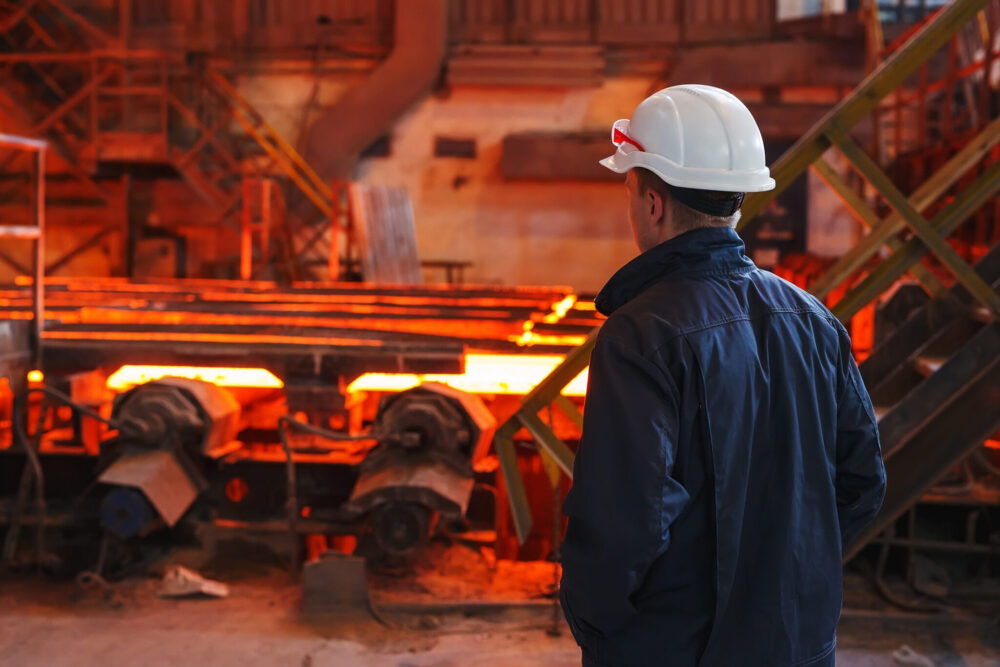Iron Ore Prices Rebound Amid Surge in China’s Steel Export Outlook

Iron ore prices rose this week, despite the overall weakness in the steel industry. Analysts are puzzled by this contradiction, particularly as China’s steel production and local consumption are still not recovering at the rate they should be. According to sector experts, the recent surge hints at a gap between actual raw material demand and steel output.
Analysts Look to Chinese Output
Iron ore is one of the most important raw materials in steelmaking. As such, ore futures markets are sensitive to expectations and often react negatively when steel metrics, such as production, demand, or profit margins, are weak.

Some analysts believe that forecasts predicting that China will end 2025 with record steel exports could be the main reason driving the current uptick in iron ore prices. So far, Beijing’s limit of 1 billion tons of steel output per year is yet to be reached. This allows room for more export-driven production before the year’s end. And more steel production means more demand for raw materials like iron ore and coal.
Struggling to forecast metal prices for budgeting and contracting? MetalMiner’s Monthly Metals Index Report includes seven metal price indexes and can be used as an economic indicator for contracting.
Other Theories Behind Surging Iron Ore Prices
On the other hand, some reports claim that a few Chinese mills could be stockpiling iron ore in anticipation of a policy-driven rebound in construction and infrastructure. While evidence of such a complete turnaround remains thin, Beijing’s ongoing stimulus efforts have, to some degree, kept this optimism alive among traders and analysts.
Iron ore futures could also be rising in part because traders expect China’s internal steel demand to improve in the last quarter, when construction activity usually picks up. Of late, China’s domestic steel market has cooled off because of the near-collapse of its property market and other policy-related issues. Many will recall that real estate was one of the largest consumers of Chinese steel in the past.
Some experts remain hopeful that a Q4 demand step up from industries like manufacturing could fill the gap and lead to a slight increase in domestic steel uptake, even if there is no uptick in the real estate sector.
Iron Ore Market Movement Highlights
- The most-traded January iron ore contract on the Dalian Commodity Exchange rose 0.82% to $112.94 (¥803.5) per metric ton.
- On the Singapore Exchange, benchmark September iron ore edged up 0.24% to $105.75 per ton.
- Steel benchmarks also gained, with rebar and hot-rolled coil prices rising 1.25% on the Shanghai Futures Exchange.

September Steel Production Recovery
After a drop in steel output for three consecutive months ending in August, China’s mills ramped up output in early September, with daily production averaging 2.087 million tons, a month-on-month increase of about 7%.
According to a Reuters analysis, China’s steel output fell in August to 77.37 million metric tons, its weakest showing since December 2024. At least some of the drop was attributed to temporary curbs for a military parade in August.
Despite this, iron ore imports surged, with August volumes reaching 105.23 million tons, and September forecasts indicating a potential high of 112.2 million tons.
Why Chinese Steel Export is Likely to be High in 2025
Lower domestic demand allows Chinese steel companies to offer globally attractive rates. Industry analysts expect China’s steel exports to remain elevated through 2025, driven by competitive pricing, overseas infrastructure projects, and strategic trade partnerships. Meanwhile, the China Iron and Steel Association is actively engaging with procurement heads to stabilize raw material supply chains, further supporting steel producers’ export capacity.

Though official export figures for Q3 and Q4 are yet to come in, analysts expect 2025 to match or exceed 2024’s high levels. This could be because of a weaker yuan, which boosts export competitiveness, and continued demand from Southeast Asia, Africa and Latin America.
Navigate volatile iron ore prices with confidence. MetalMiner equips you with the critical insights you need to develop a winning category portfolio strategy. View our full metal catalog.
Strategic Implications
Despite tariffs imposed by some countries to block cheaper, “Made in China” steel, China’s export reliance and resilience continue to reshape global steel flows. As a result, those countries dependent on Chinese steel may face pricing volatility, while their domestic producers may struggle to compete. As for China itself, exports offer a pressure valve for excess capacity and a hedge against domestic economic uncertainty.
